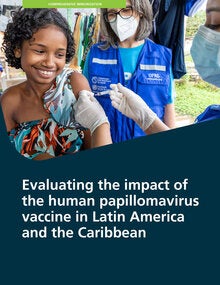In women, cervical cancer is the leading cause of cancer death in six countries and the second leading cause of death in 14 others. Each year, more than 70,000 new cervical cancer cases are diagnosed, and more than 35,000 women in the Region will die due to this disease. The Human Papilloma Virus (HPV) 16 and HPV-18 are responsible for around 70% of these cancers. Vaccination against HPV - in addition to adopting new approaches to screening and improving the quality of cancer treatment, palliative care, and cancer registration - is a safe and effective form of protection against high-risk HPV types. As of December 2022, 47 countries and territories of the Americas ha incorporated HPV vaccines into their national immunization programs prioritizing girls between 9 and 14 years of age, following PAHO's TAG recommendations. As a primary tool for the fight against cervical cancer, achieving high vaccination coverage and monitoring and evaluating the performance of HPV vaccination programs and their impact on HPV-related morbidity and mortality must be a priority. As such, this document offers a broad overview of design used to assess the impact of HPV vaccination to help sustain country investments and support the goal of eliminating cervical cancer. The primary audience for this document includes managers and professionals of national immunization programs, epidemiologists from Ministries of Health or institutions involved in vaccination impact studies, professionals from HPV reference laboratories and epidemiologists working on cervical cancer prevention. In addition, this document could be useful for epidemiologists working on other HPV-related diseases, researchers in academic universities or other institutions, pathologists who interpret cervical screening Pap tests (cytology), non-governmental organizations, public health leaders and officials and medical professionals.
|

